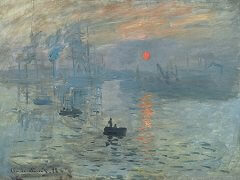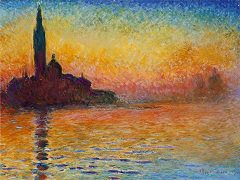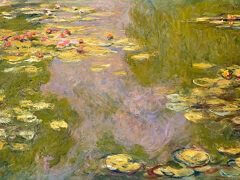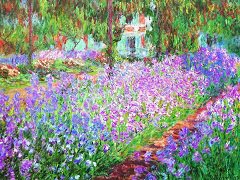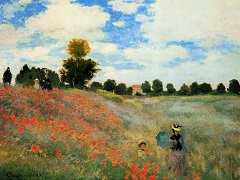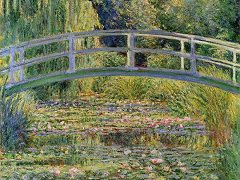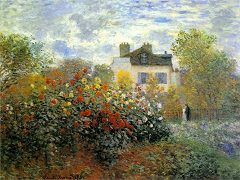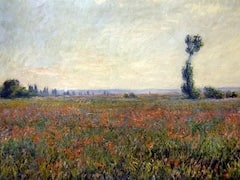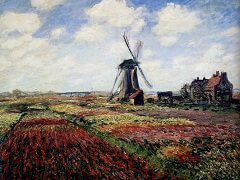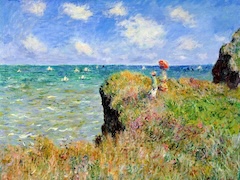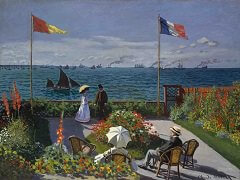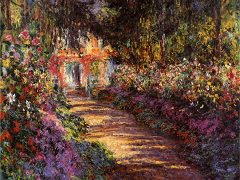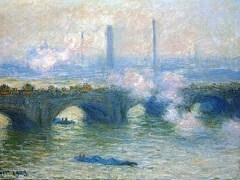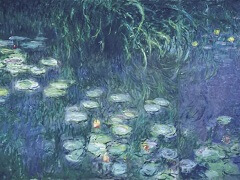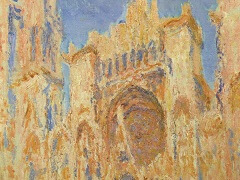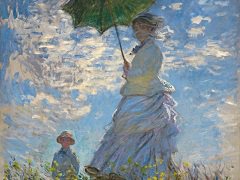Women in the Garden by Claude Monet
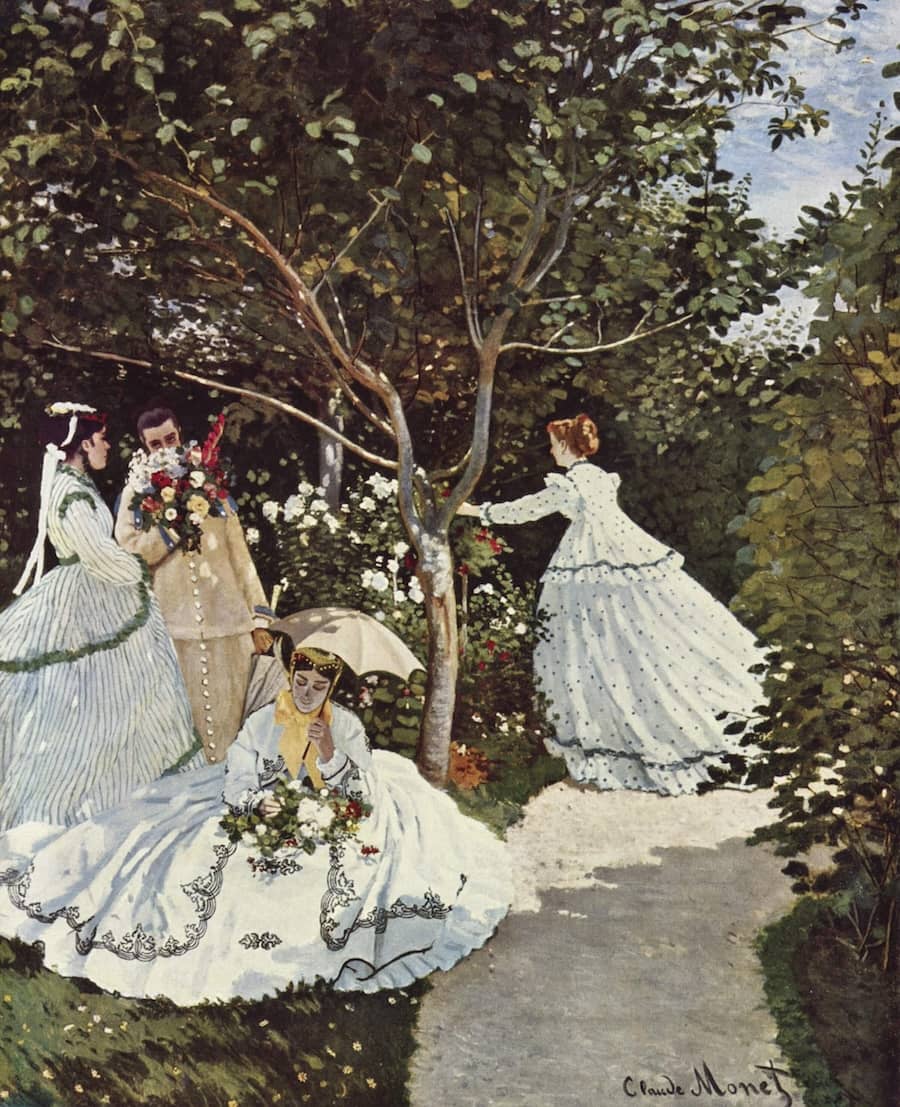
Monet began a large painting of the garden of the property he rented in the Paris suburbs in 1866. The work was so large that a pulley system was required along with a trench - into which the painting could be lowered on the pulley - so that he could work on the upper areas of the canvas. The aim of this work was to discover how figures - within a landscape - could give the impression that air and light moved around them. He organized this by painting shadows, light with purposely-used color, sunshine filtering through the foliage, and reflections glowing through the darker gloom. Camille, it is known, posed for the three figures on the left of the piece, but the faces of all the figures are left vague and are not composed in a portraiture style.
Monet has skilfully rendered the white of the dresses, anchoring them firmly in the structure of the composition - a symphony of greens and browns - provided by the central tree and the path.
Finished in the studio, the painting was refused by the jury of the 1867 Salon which, apart from the lack of subject and narrative, deplored the visible brushstrokes which is regarded as a sign of carelessness and incompleteness.

Women in the Garden was a huge achievement as an early plein air work for Monet, the challenges it had presented were immense, but he overcame them to create this stunning masterpiece.

